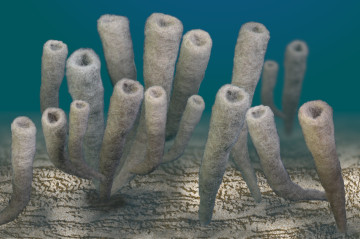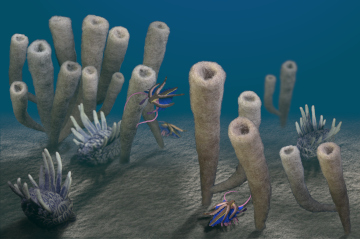Vauxia gracilenta
Vauxia gracilenta is a species of sponges found from the Burgess Shale of the Middle Cambrian, and was first described by Charles D. Walcott 1), 2).
Vauxia was placed in the hexactinellids (Class Hexactinellida), however, was later reassigned to the demosponges (Class Demospongiae) 1).
The generic name "Vauxia" is named after Mount Vaux, a mountain in Yoho National Park, British Columbia, Canada, and the specific name "gracilenta" is derived from the Latin "gracilis", meaning "slender" 1).
created in May - June 2023.
References:
- Vauxia gracilenta - The Burgess Shale (Royal Ontario Museum)
- Walcott CD (1920) Cambrian Geology and Paleontology IV, No.6 Middle Cambrian Spongiae. Smithsonian Miscellaneous Collections 67(6): 261 – 365.


